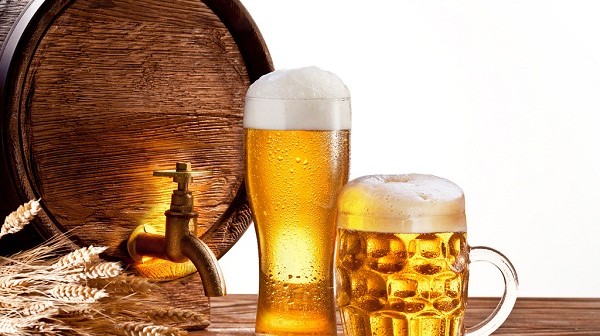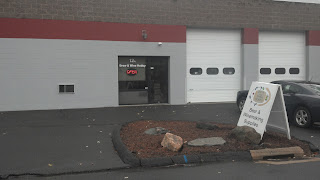
December 26, 2012:
Shred’s Home Brew #1
So, with the Christmas fiasco over, I’ve had a few minutes to read through some forums and skim some of the pages in my book. I think I better understand what most of the equipment is for
It would seem the carboy (the big, glass water bottle thing) won’t be needed for my first brew as I’ll be making a basic Ale. In my kit, the carboy would be used only when a secondary fermenting or conditioning vessel is required… like with a lager or a beer requiring special additives/flavorings.
Many people apparently use 1 bucket for fermenting then another for bottling. My bucket doubles as both as it has a spigot at the bottom and an airlock at the top. As I understand it, the 2 bucket system is used to help prevent sediment from the bottom of the fermenting bucket from getting into the bottles. My spigot is about an inch off the bottom, so I’m assuming it was designed with this in mind.
Edit: Nope – had to buy a second bottling bucket or I would have had beer bottles full of sludge. As the yeast finishes fermentation it drops out of solution and it, along with proteins and various other materials, settles to the bottom forming what is known as “Trub” (pronounced Troob).
Many commercial breweries as well as homebrewers will wash this trub layer and repitch the healthy yeast in future brews.
Now it’s time to hit the brew store to find a boxed recipe… any of you who know me know it kills me to make anything out of the box or by strict recipe, but as this is an advanced chemistry (edit – really, it’s more microbiology) and I don’t want to blow my house up or poison anyone (well… neither of those is completely true), I’m going to err on the side of caution for at least my first attempt.
Note: You’d have to be a complete idiot to blow your house up brewing beer. Burning it down is another story.
I do a Yelp search and come up with a place nearby with glowing reivews, Brew & Wine Hobby.
I set my nav and head into the back alleys of East Hartford, CT. Down at the end of an industrial area my nav tells me I’ve arrived. I look around, turn around, look around some more, and then I see it:
I enter the store and I’m confronted by industrial shelves 100′ high, covered in boxes, and trinkets, and whosiewhatsits… okay, it’s not really that big, but I have no idea what I’m looking at. Eventually I get my bearings and find an area in the back where they have boxed ingredient kits. My research has told me a Pale Ale is a good way to start.
Pale Ales use warm (ale/top) fermentation (generally between 65-70F), so no special refrigeration is needed, and it doesn’t require the use of a secondary fermenting vessel. They are bottle conditioned, meaning once the wort (gross word for unfermented beer, prounounced wert) has finshed in the fermenter, it’s transferred directly into the bottles to be conditioned – basically, to become bubbly and allow the flavors to mature and meld. I pick one and head up to the register.
I ask the gentleman behind the counter how many other dummies he’s had come in today (the day after Christmas) with stupid questions about their first brew kit. He warmly replies something about it being fun to help newbies. I take this as a sign of weakness and pounce!
“Is this a good first ingredient kit? What size bottles should I buy? What’s that over there? What does this do? Oooo pointy… Ouch!”
He quickly hides all sharp objects and asks which equipment kit I have. I pointed to the box in the store identical to mine and he informs me I have a wine making kit. I look at the Pale Ale kit on the counter and say, “Well, I guess I’m making wine then.”
I let the patient man standing behind me go ahead and I proceed to look at the box more closely. It seems to have different contents than the nearly identical box I received. For one, my kit had a beer making guide in it, and a capper. How could it possibly be for wine making?
I look up the kit on my phone and show the nice man what I actually have. He’s surprised that they would include a 6 gallon carboy as most beer recipes call for 5 and air at the top is apparently bad. He does, however, agree that what I have is for making beer. When it comes time to use the carboy in a later (my next?) recipe, I’ll use that extra gallon for customizing a box recipe and make a few more bottles.
I purchase the Pale Ale ingredient kit, 2 cases of brown bottles (48) and an iodine sanitizer. Apparently the B-Bright in my equipment kit is a cleanser, not a sanitizer (I later find that my B-Bright is actually supposed to be C-Bright… a sanitizer. Oh well. Thanks again, Monst….. no names).
The guy behind the counter tells me to ignore the instructions in the kit, which say to leave the beer in the fermenter for 7 days, and do 14 days. Ahhh! Another week I’ll have to wait.
His reasoning is that while 7 days is long enough for the yeast to munch on all the sugars in the wort (usually), leaving it longer allows it to find other things to eat. The yeast produces byproducts as it eats the sugars, but given time, will go back and clean some of those up. This results in a “cleaner” beer. Basically, the yeast eats, takes a dump in my beer then, in an act of true gluttony, goes back and eats the yeast poo. At least, that’s how I translate it.
Edit – I generally leave my beers for a minimum of 3 weeks and a maximum of 6 weeks now. This gives the yeast time to fully ferment the beer. Additionally, after the first 3-5 days of fermentation it’s safe to begin increasing the temp slowly to around 68F, the yeast will eat up the diacetyl created during active fermentation. Diacetyl can create off-flavors in beer.
Consult the guidelines on your specific yeast to determine what the appropriate temperature range is for the primary fermentation.
Naturally, they have their own instructions for proper dilution of the iodine sanitizer and tell me to ignore the instructions on that package as well.
He helps me load my car and I head home. The anticipation of starting my first ever brew is killing me!
Stay tuned.
Next Article: Brewing My First Beer / Wort
—————————————————————————————————











No Responses to “Purchasing My First Beer Ingredient Kit”